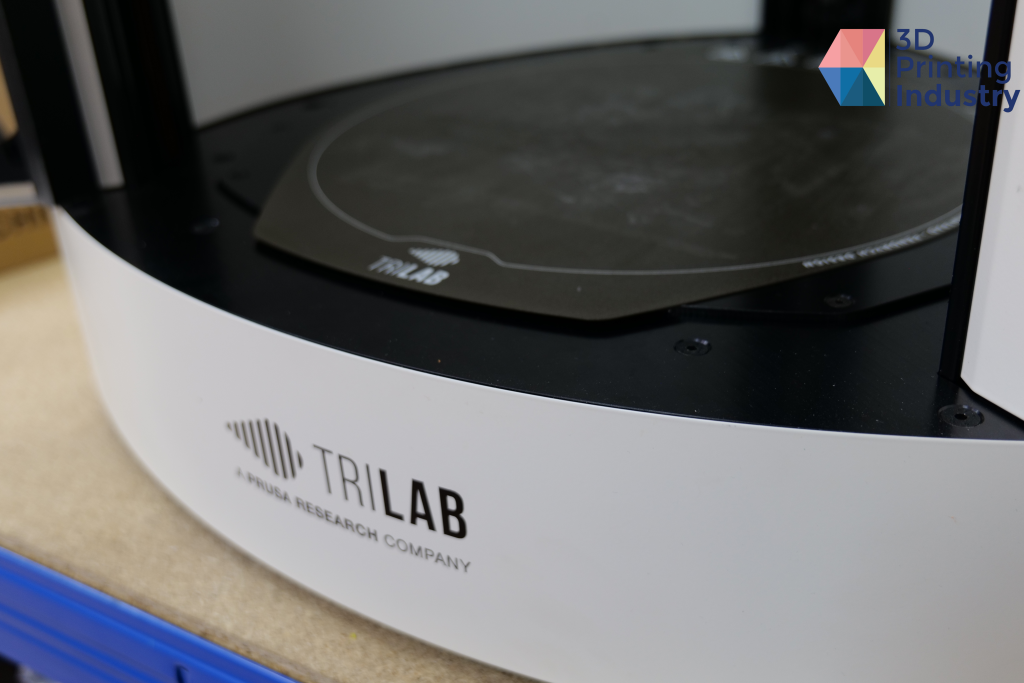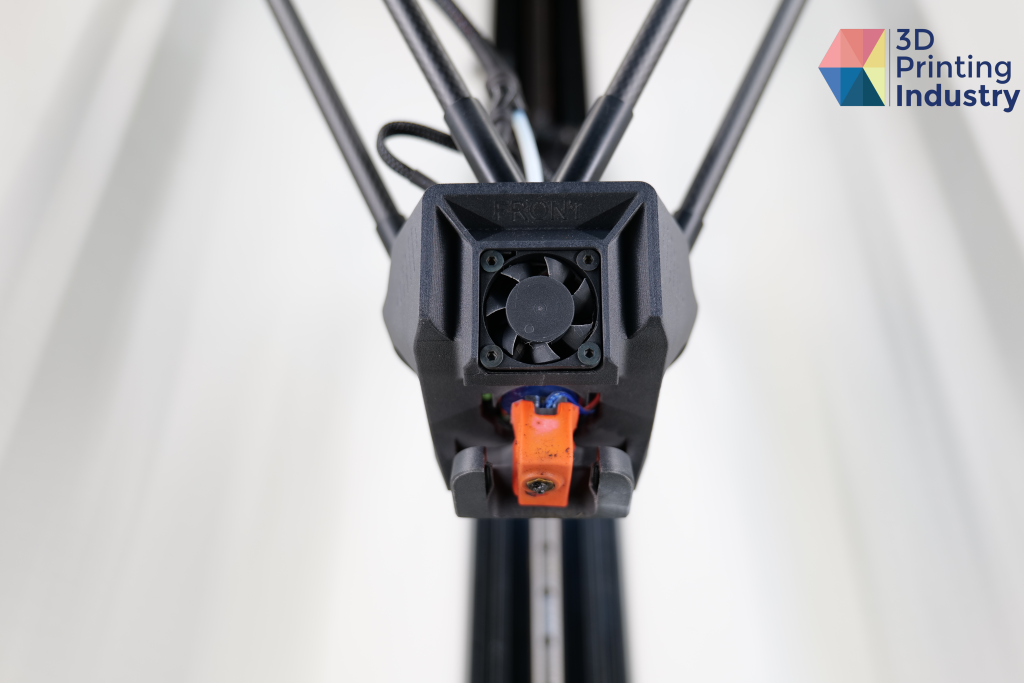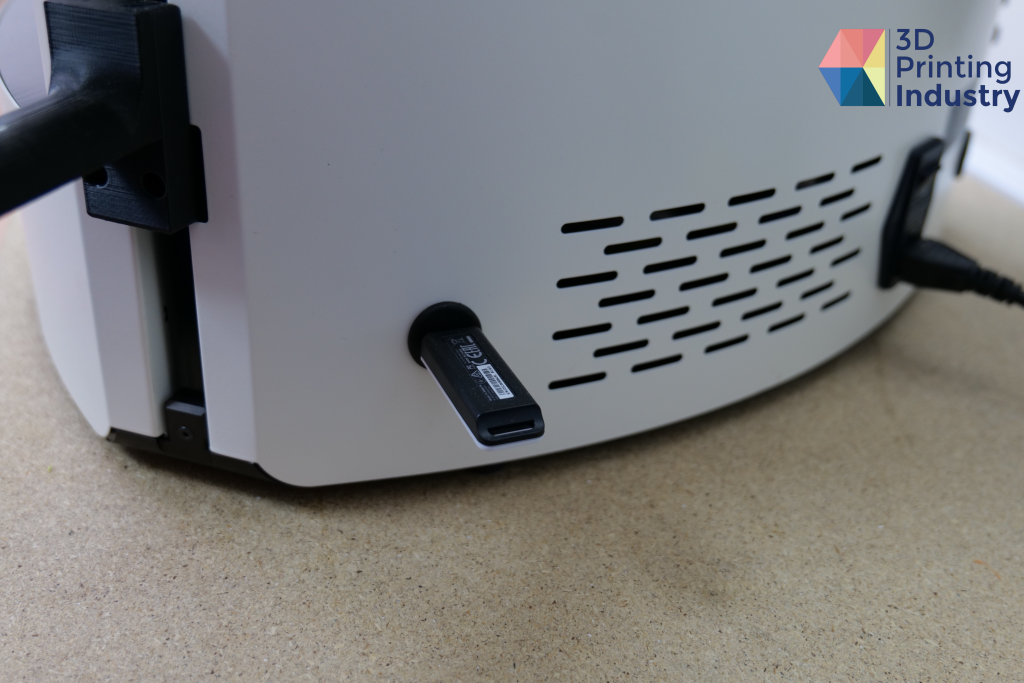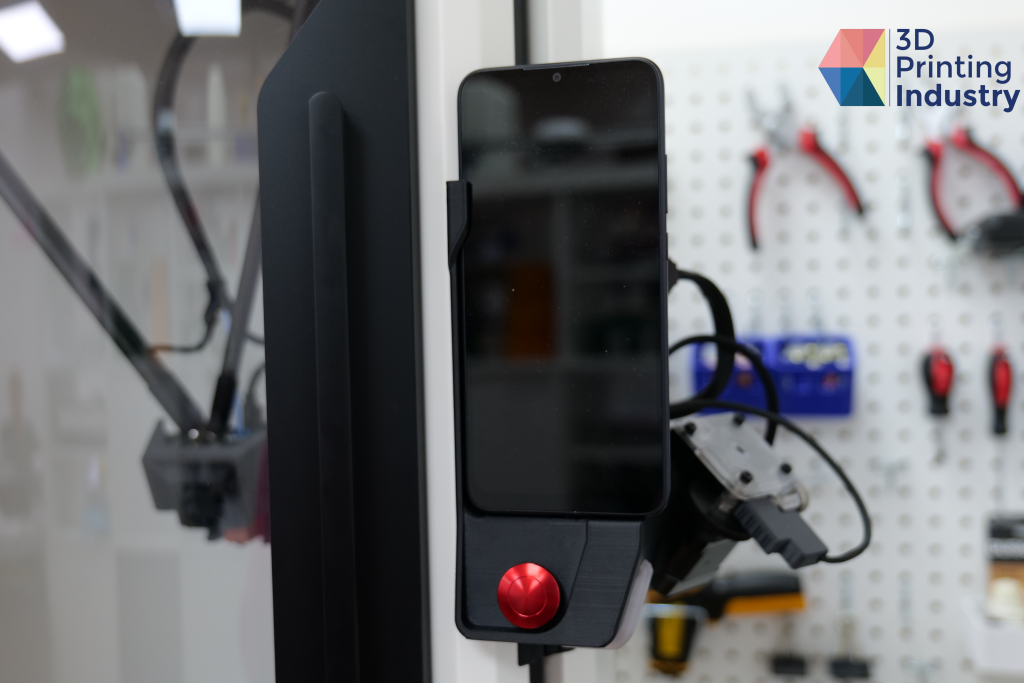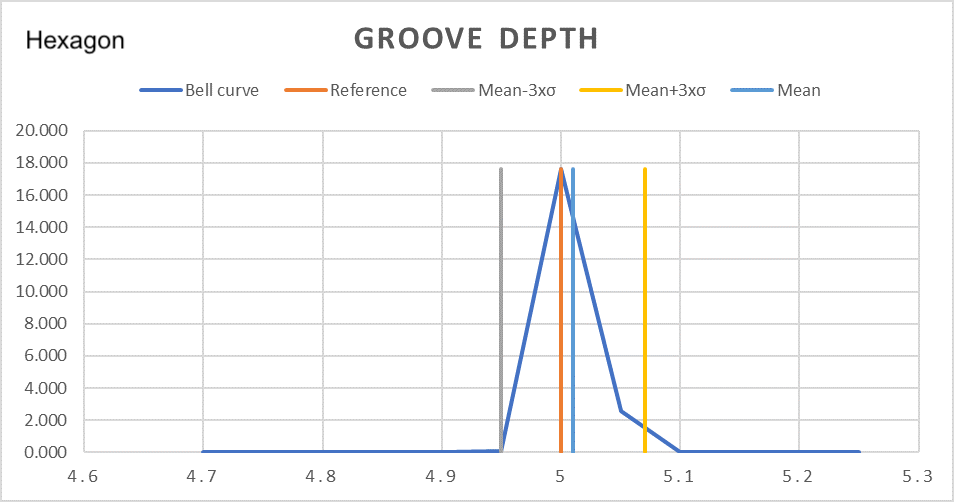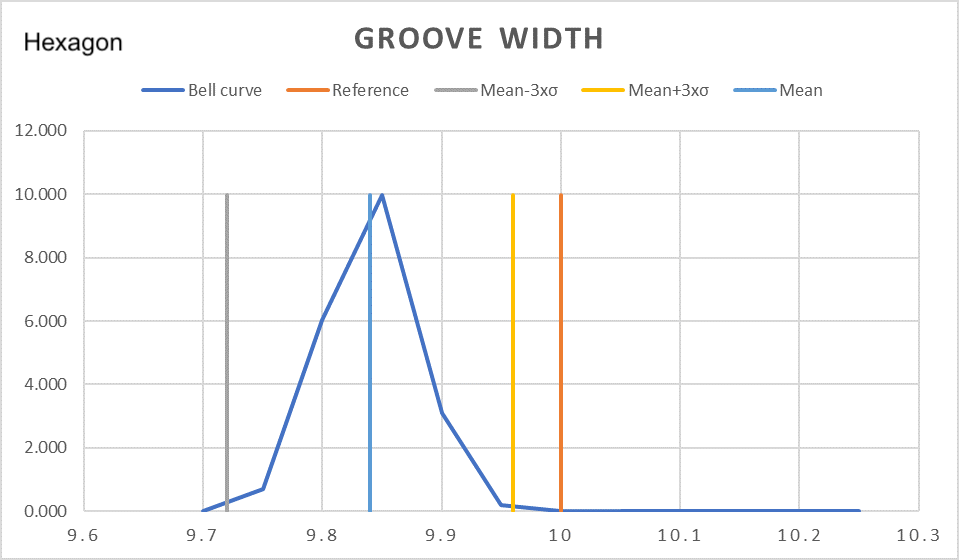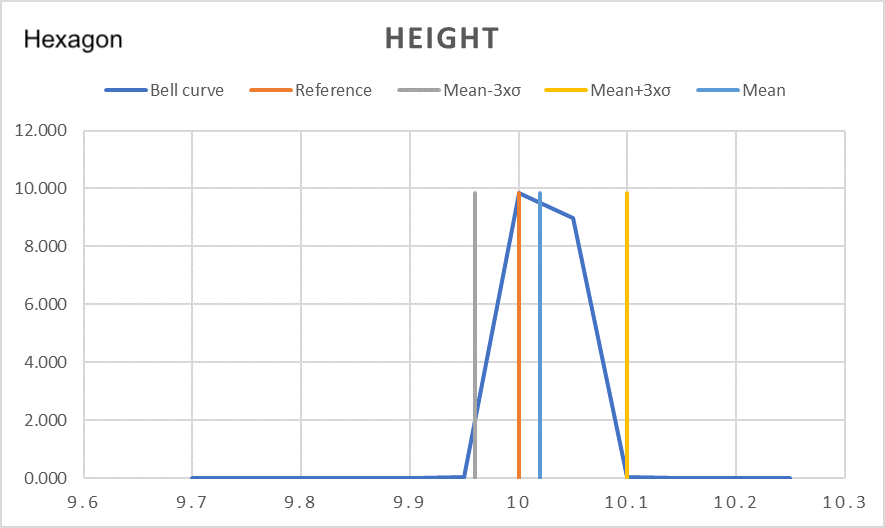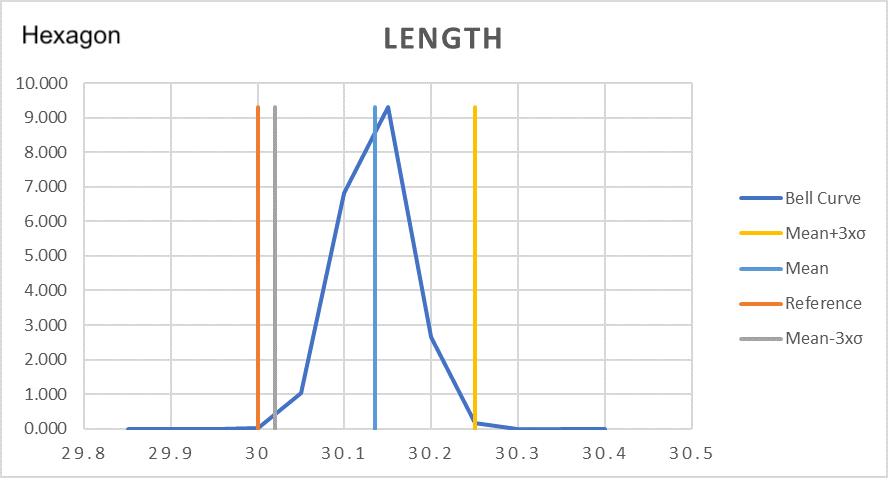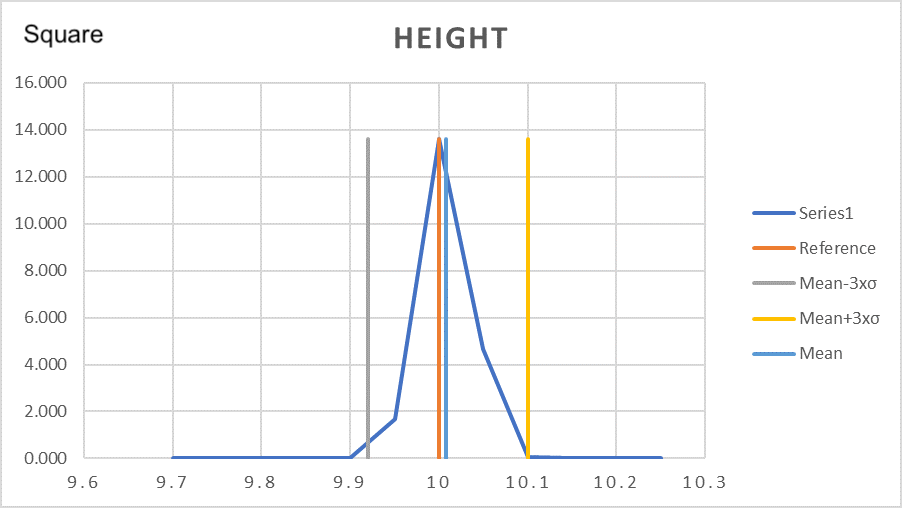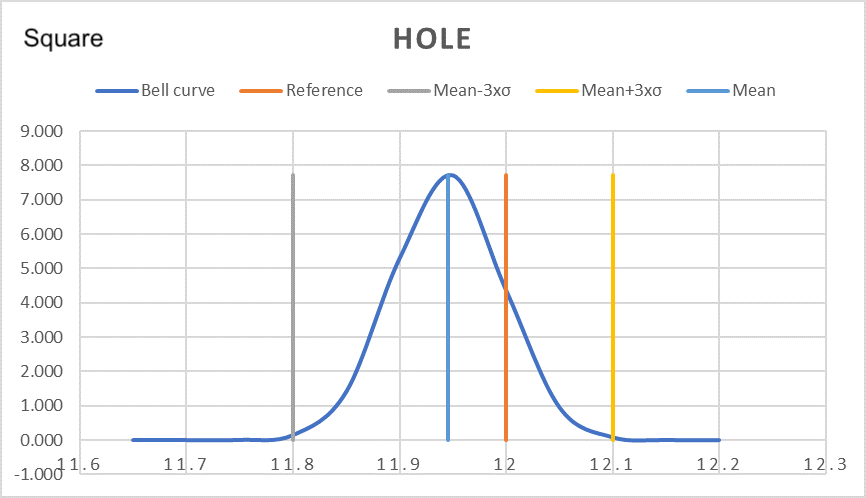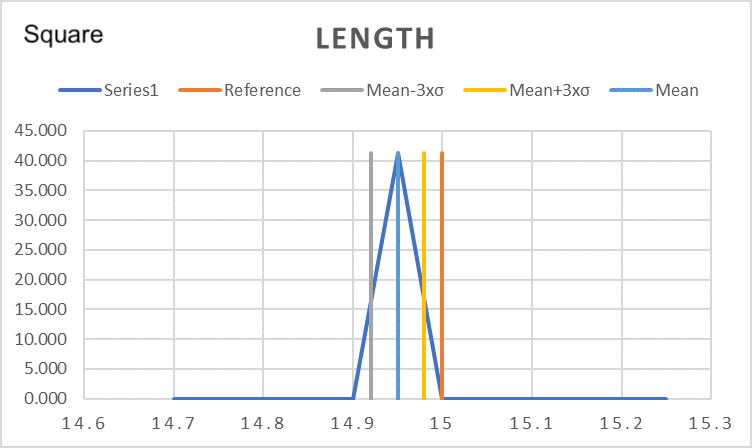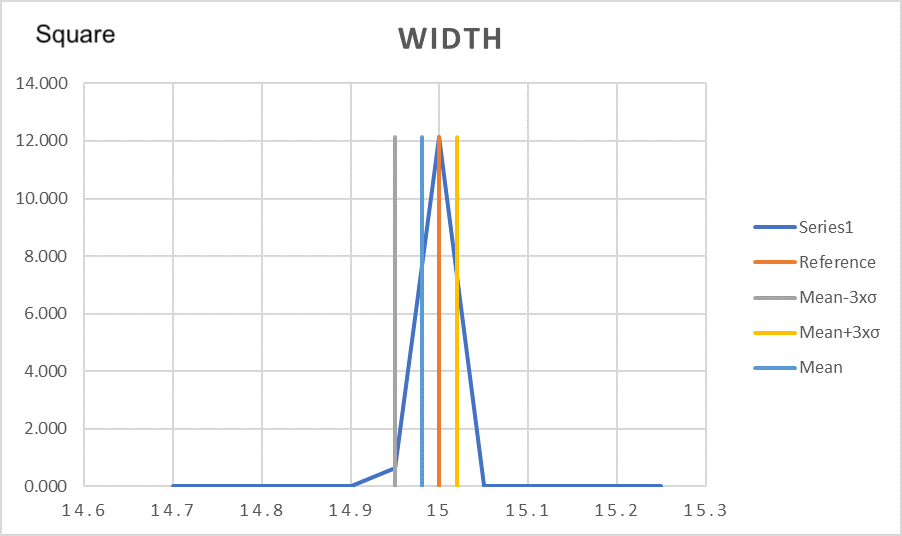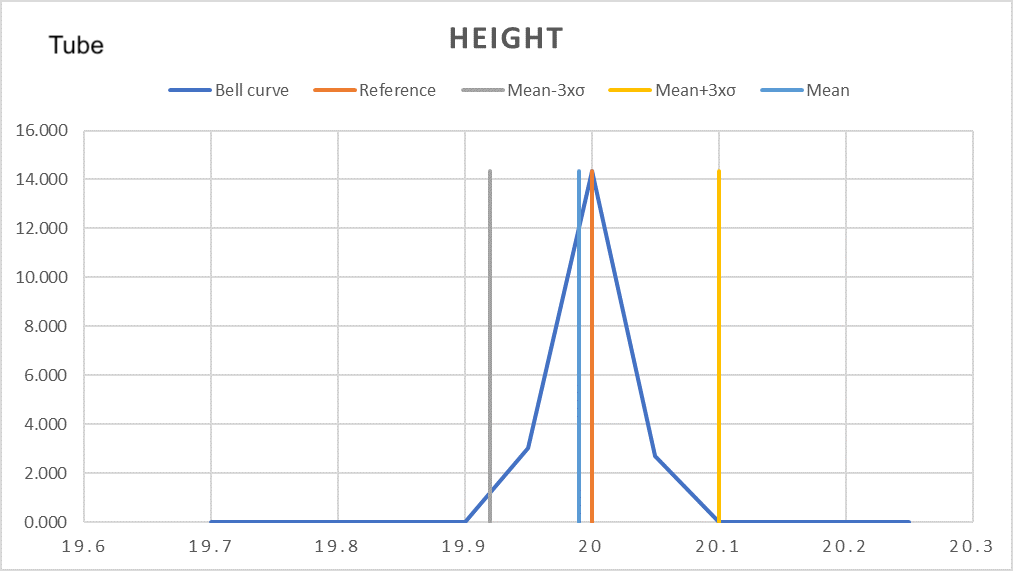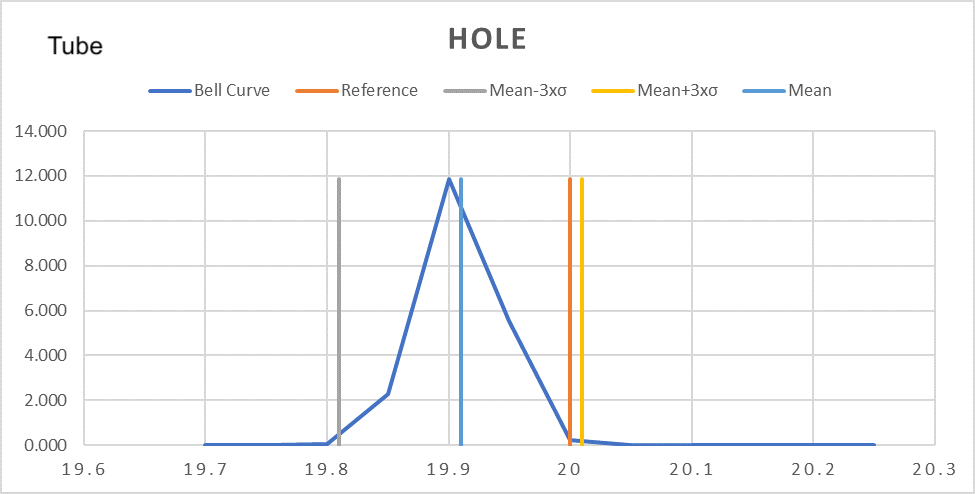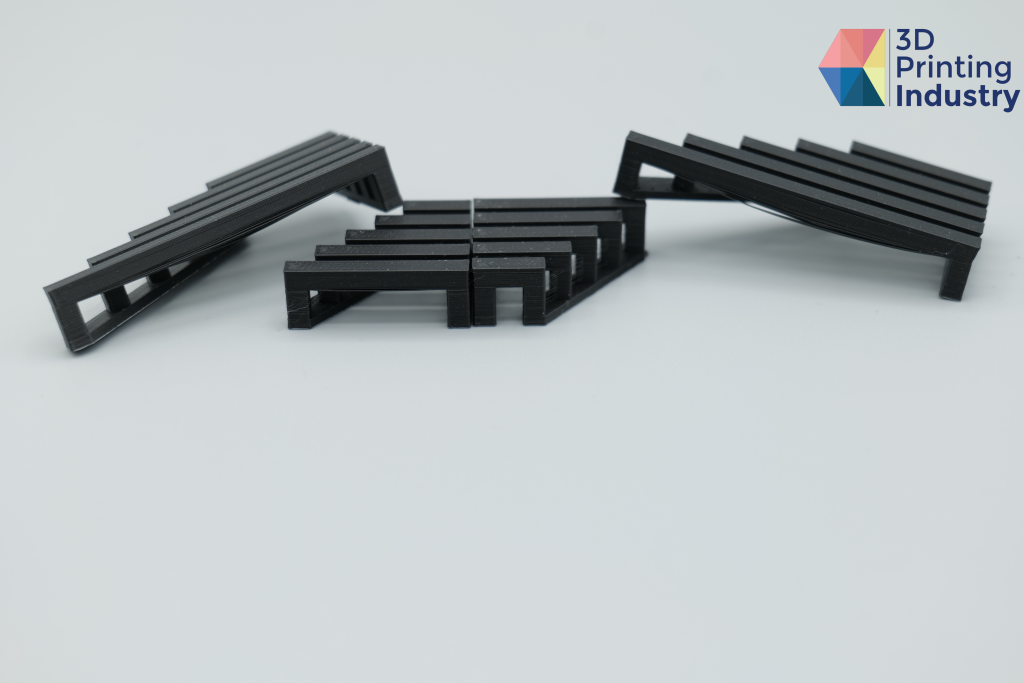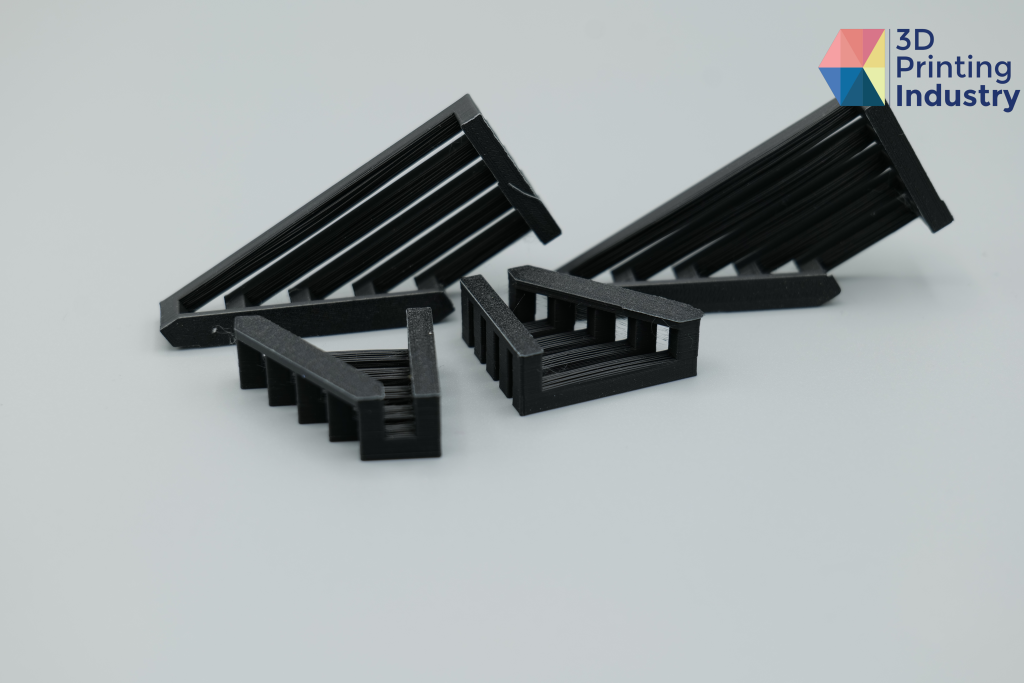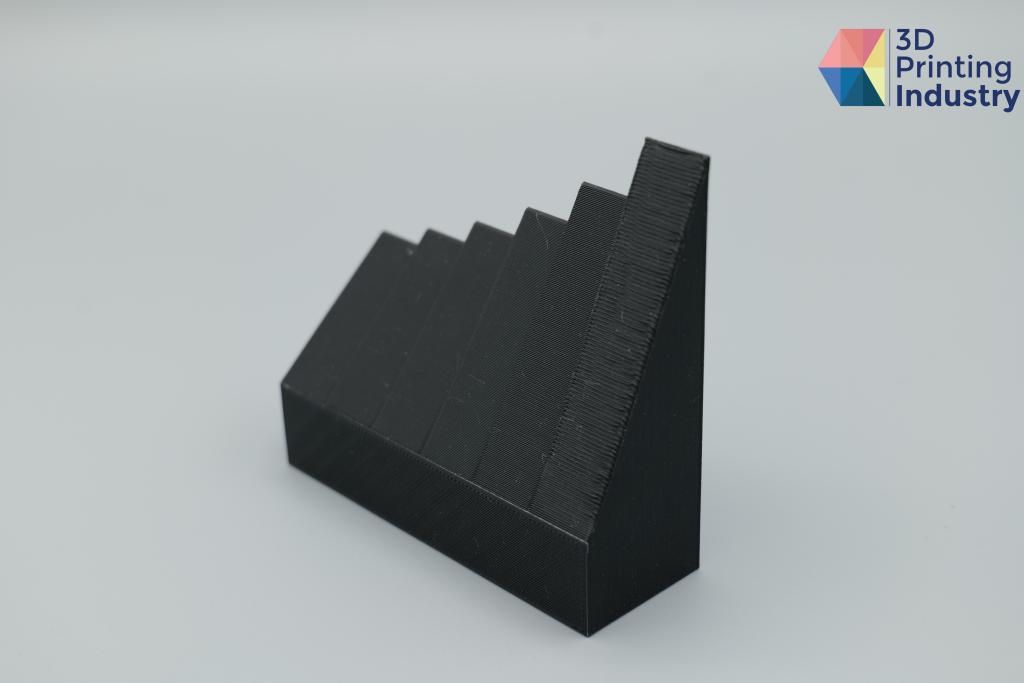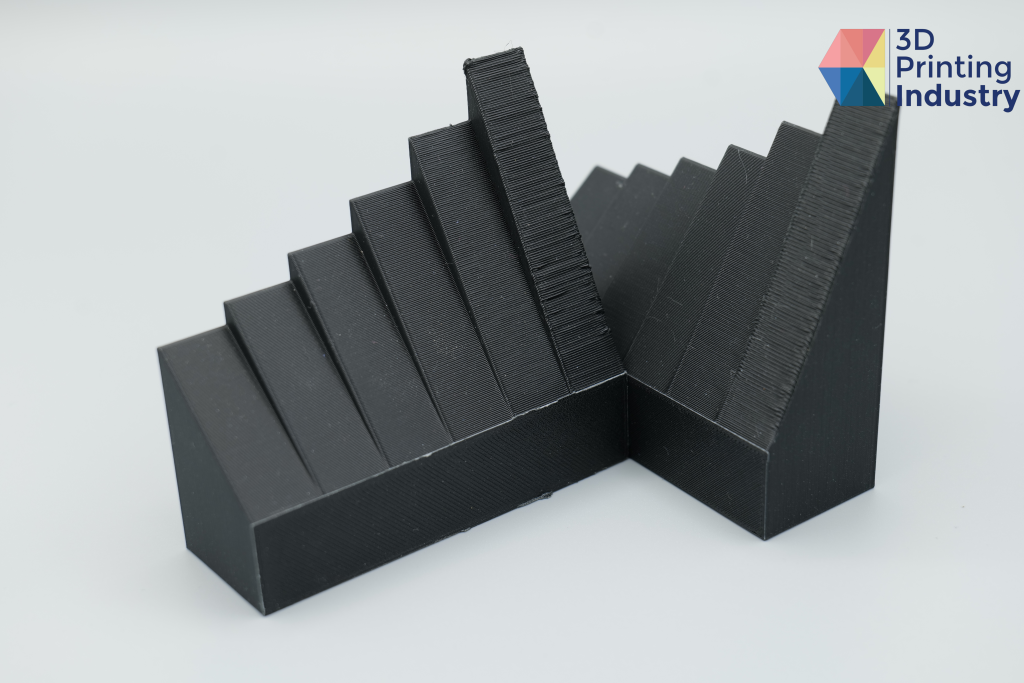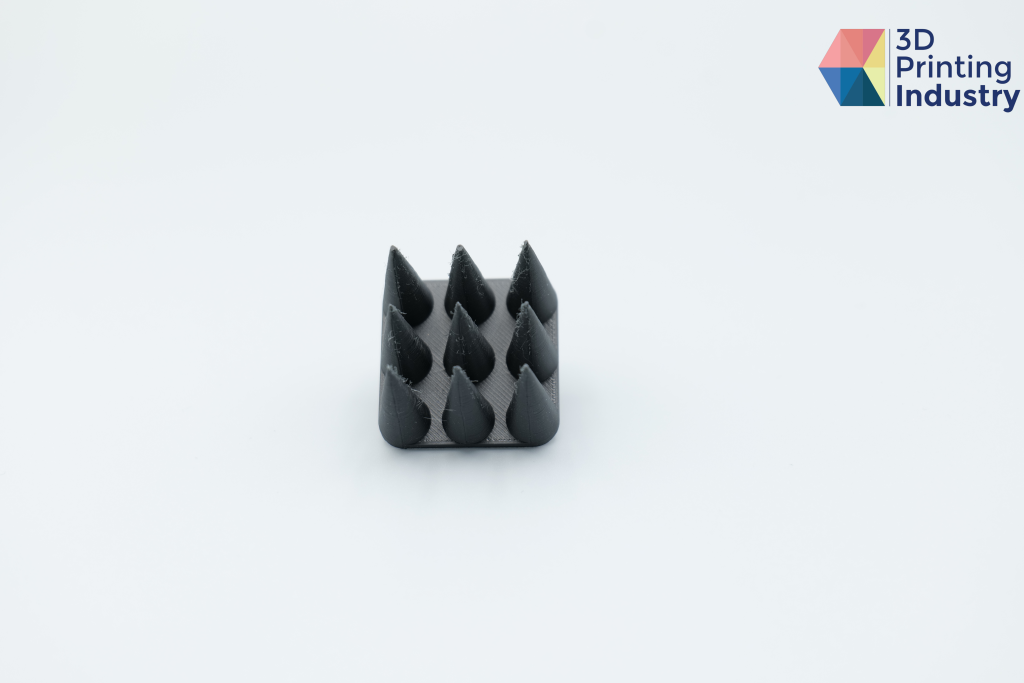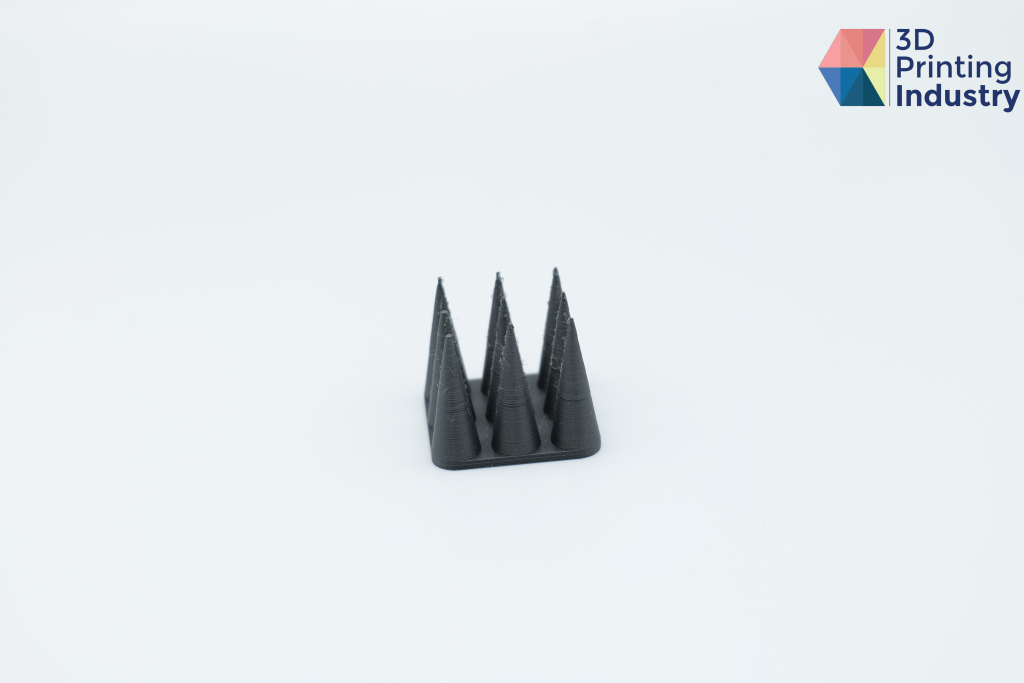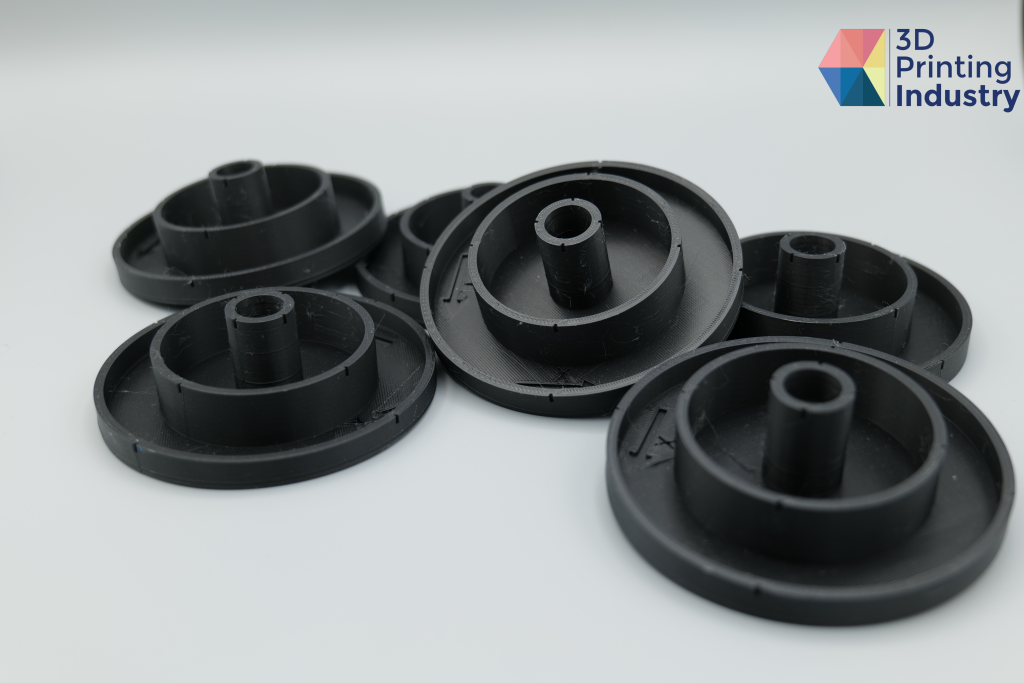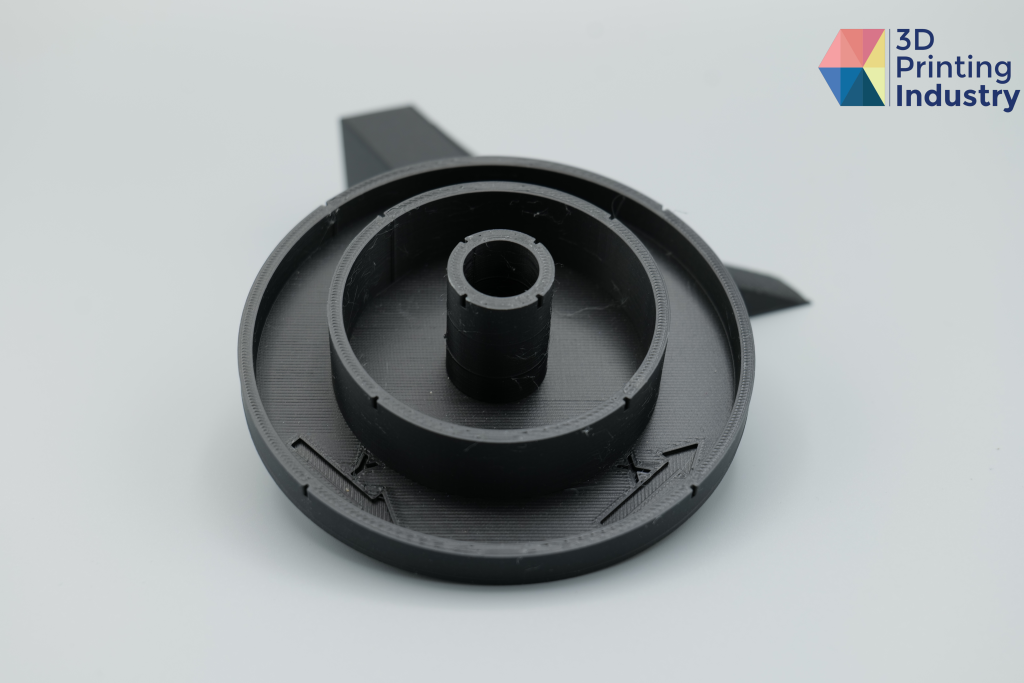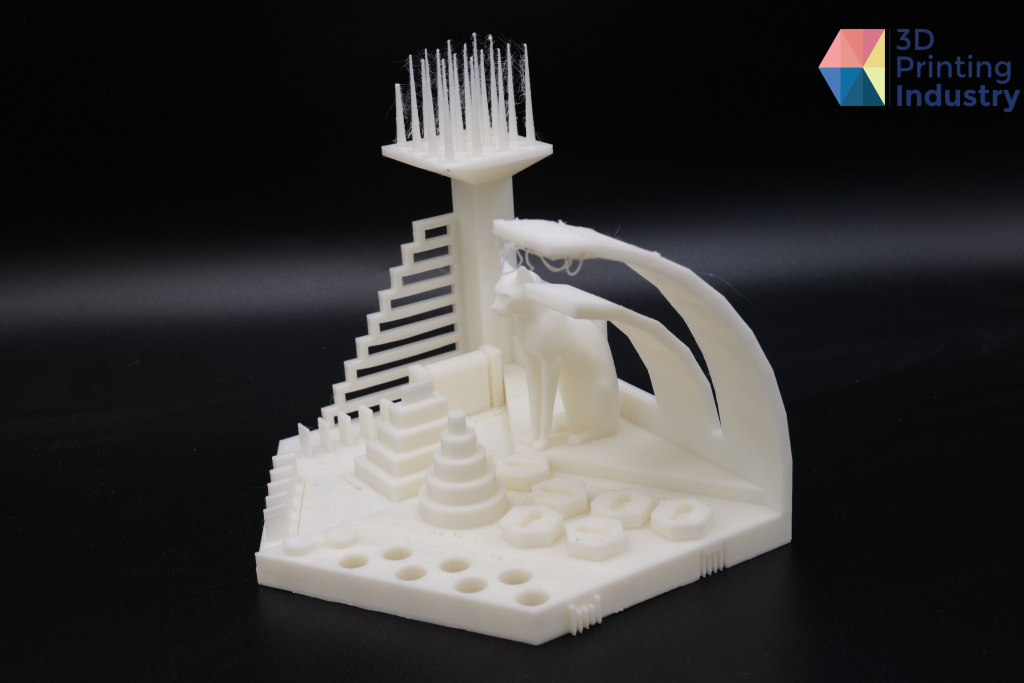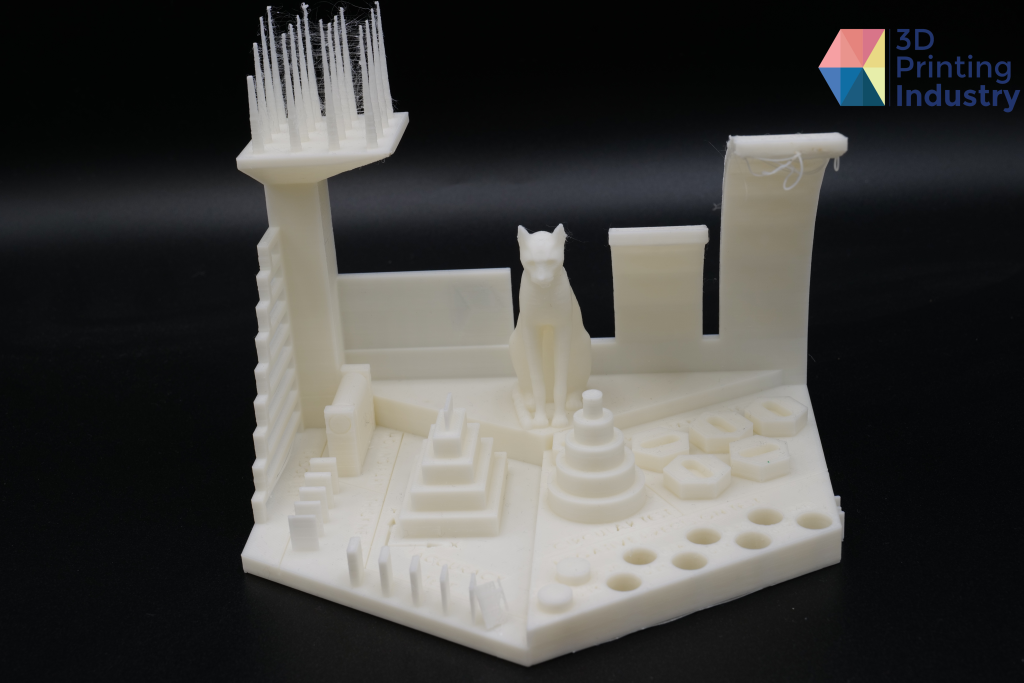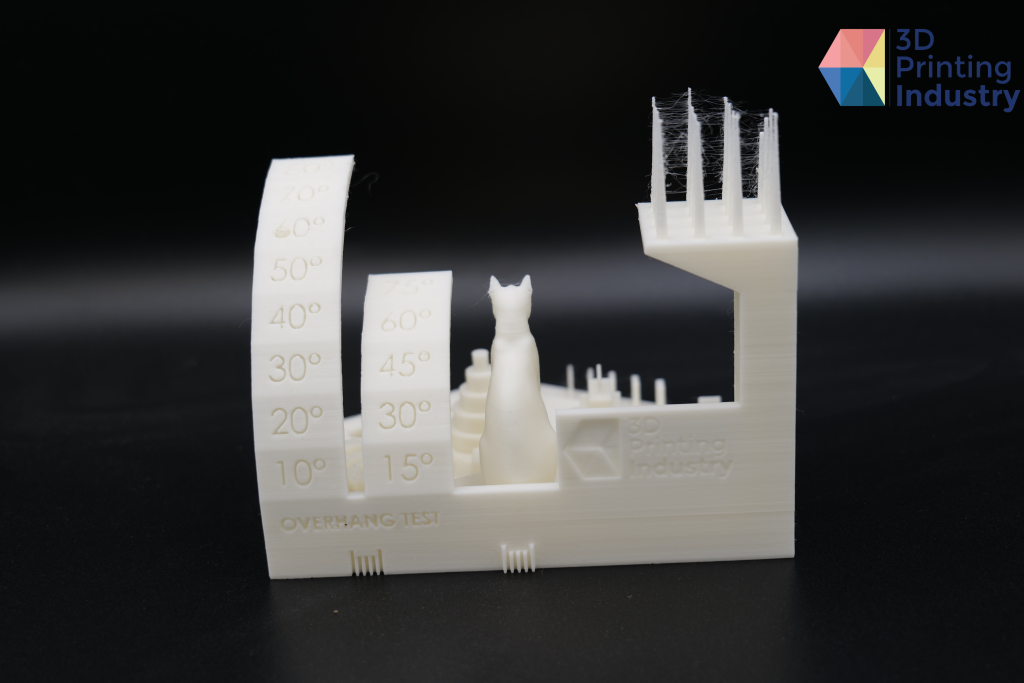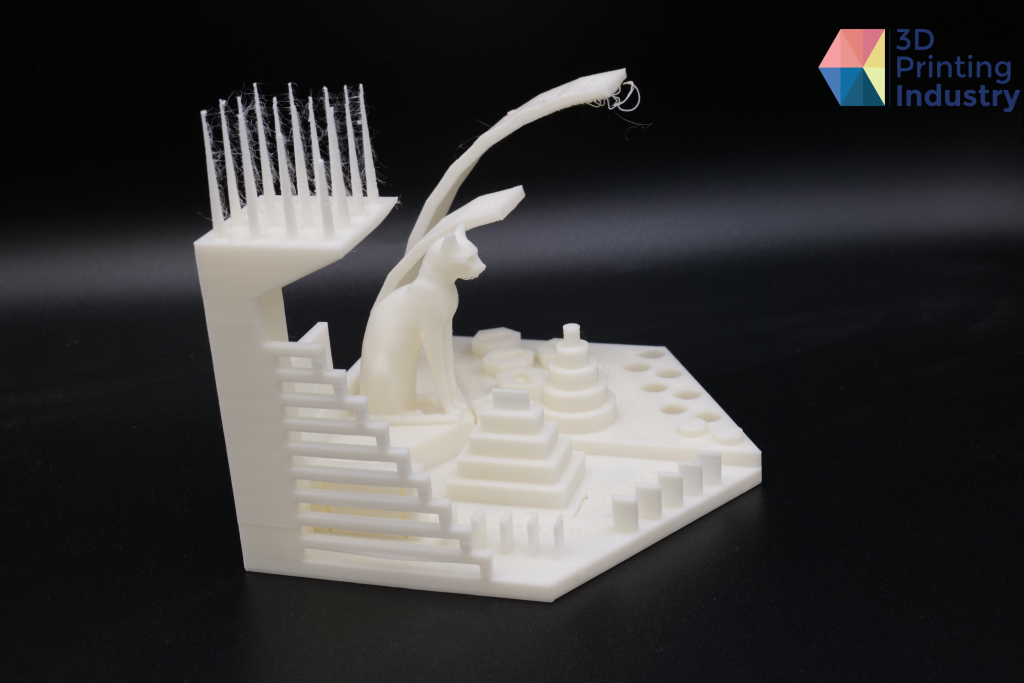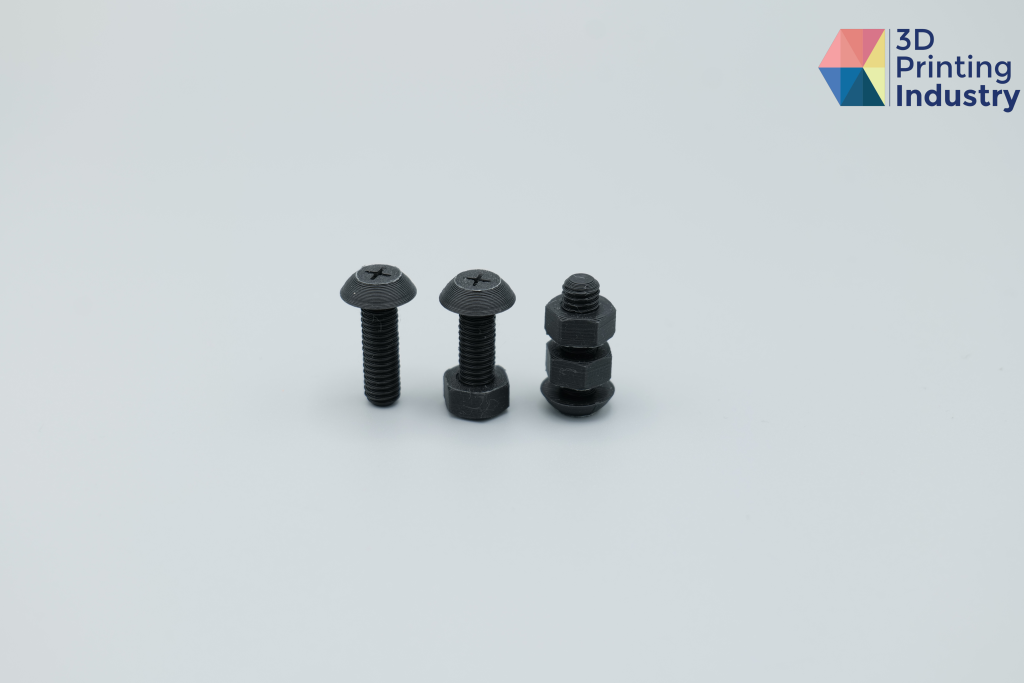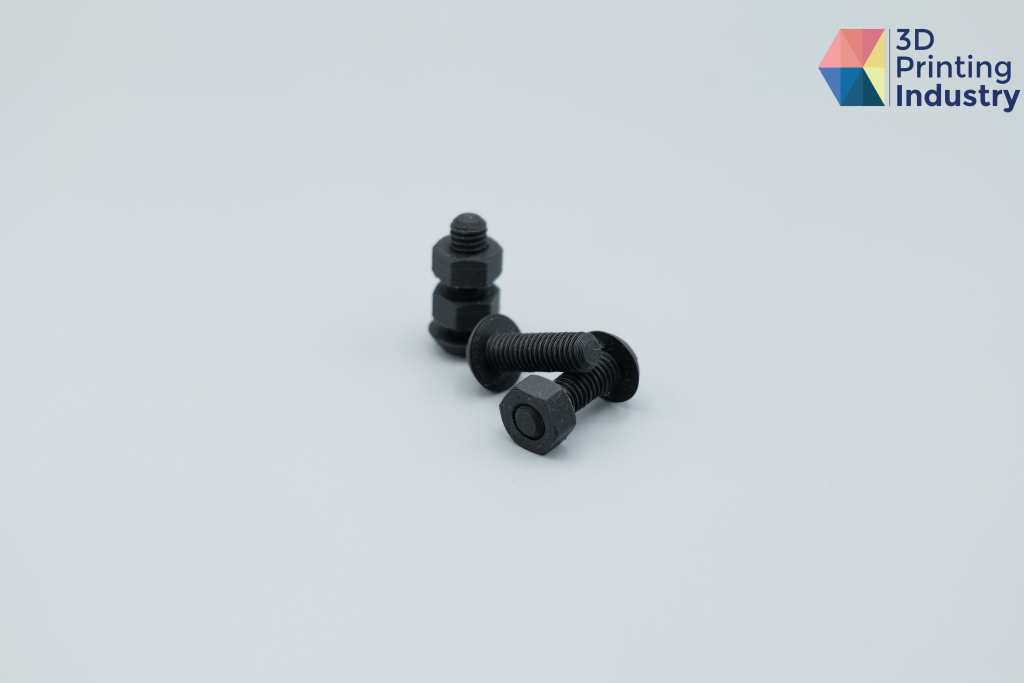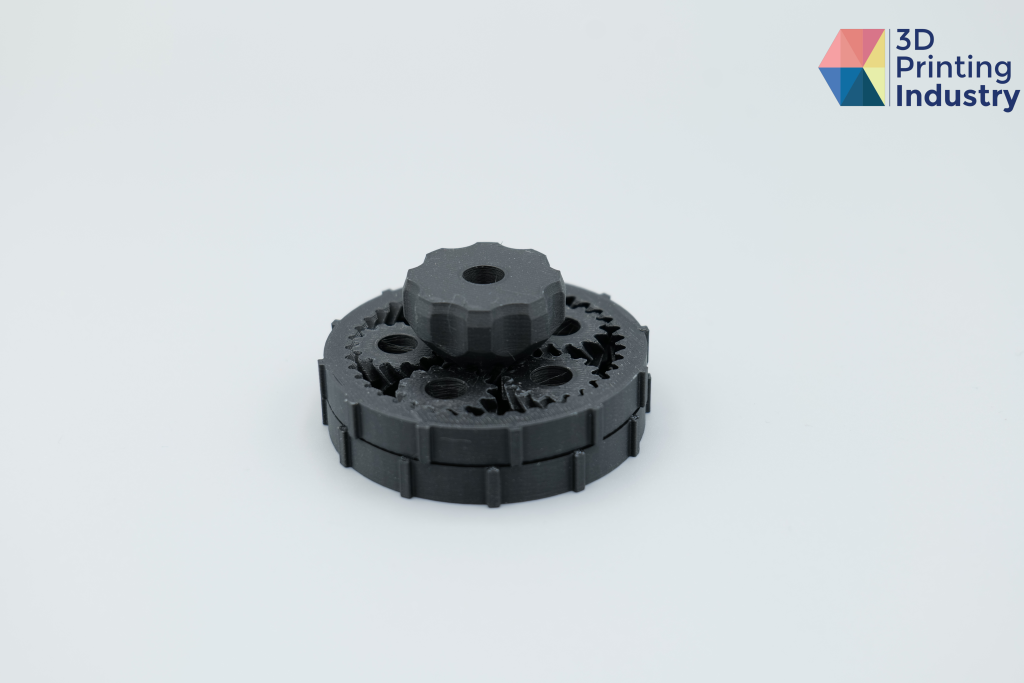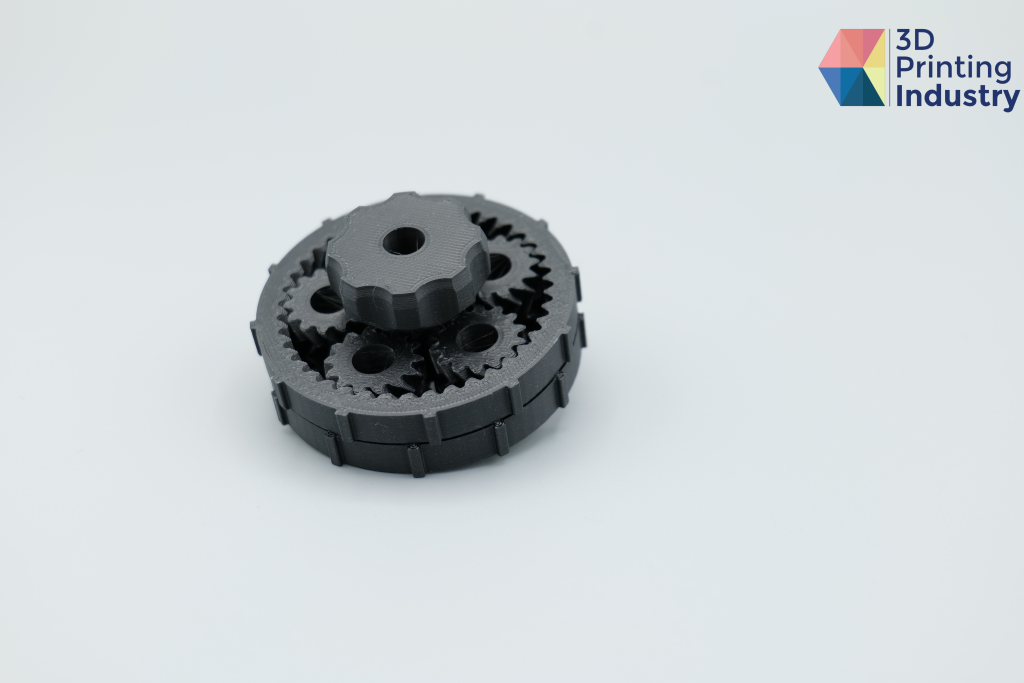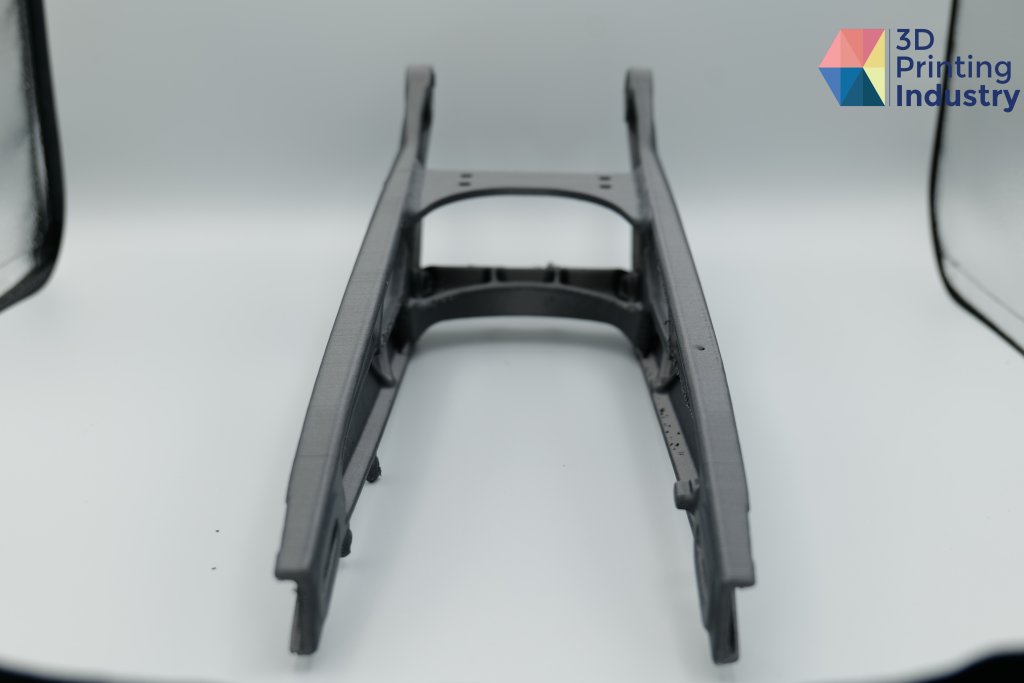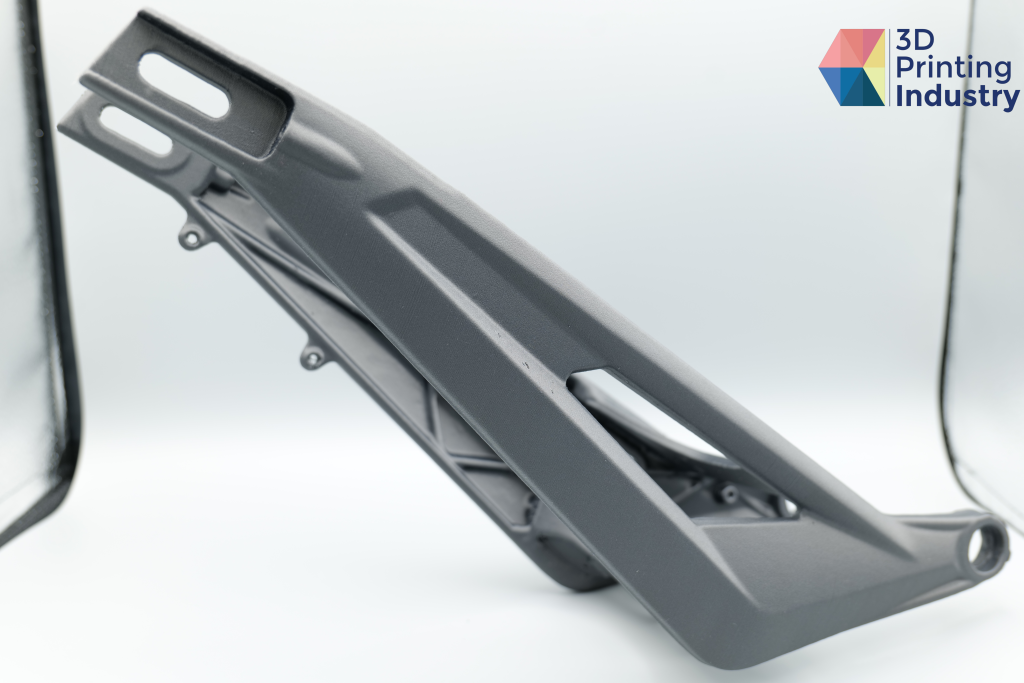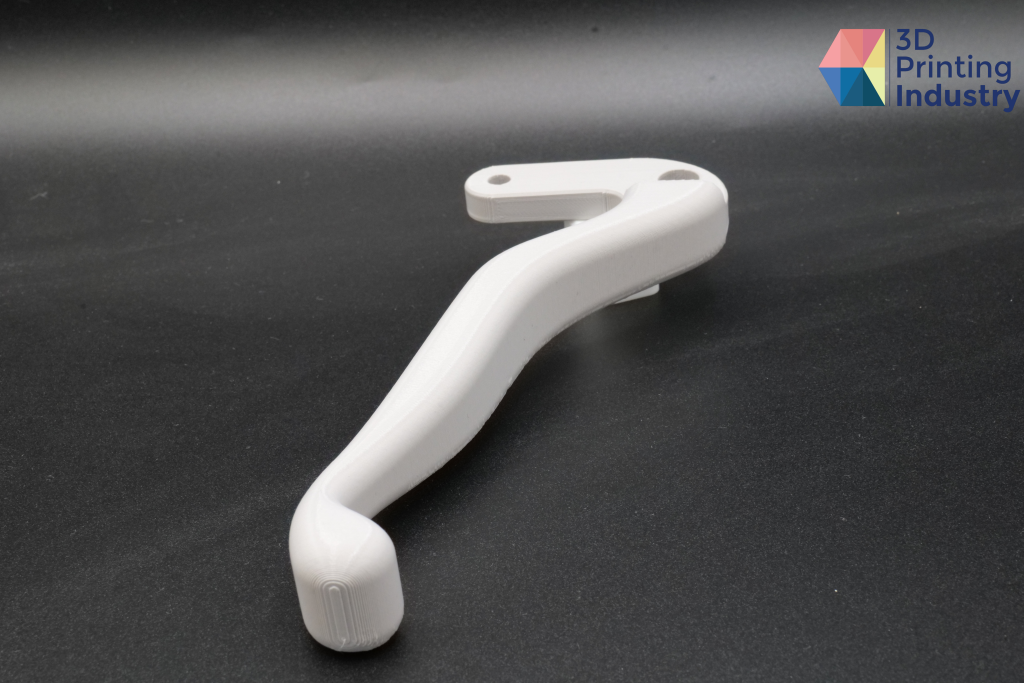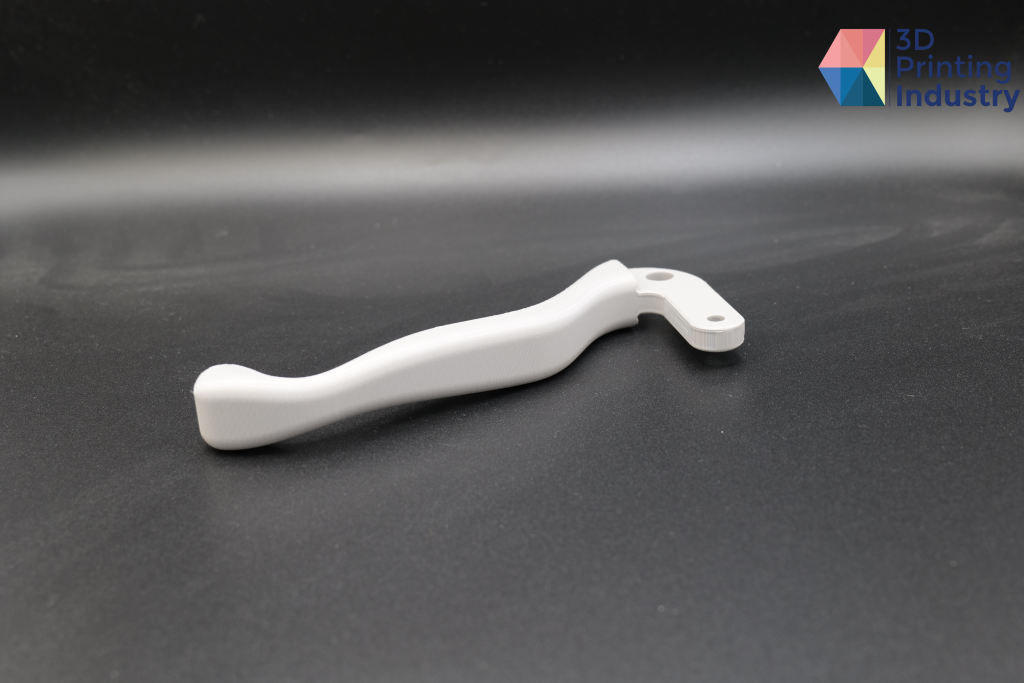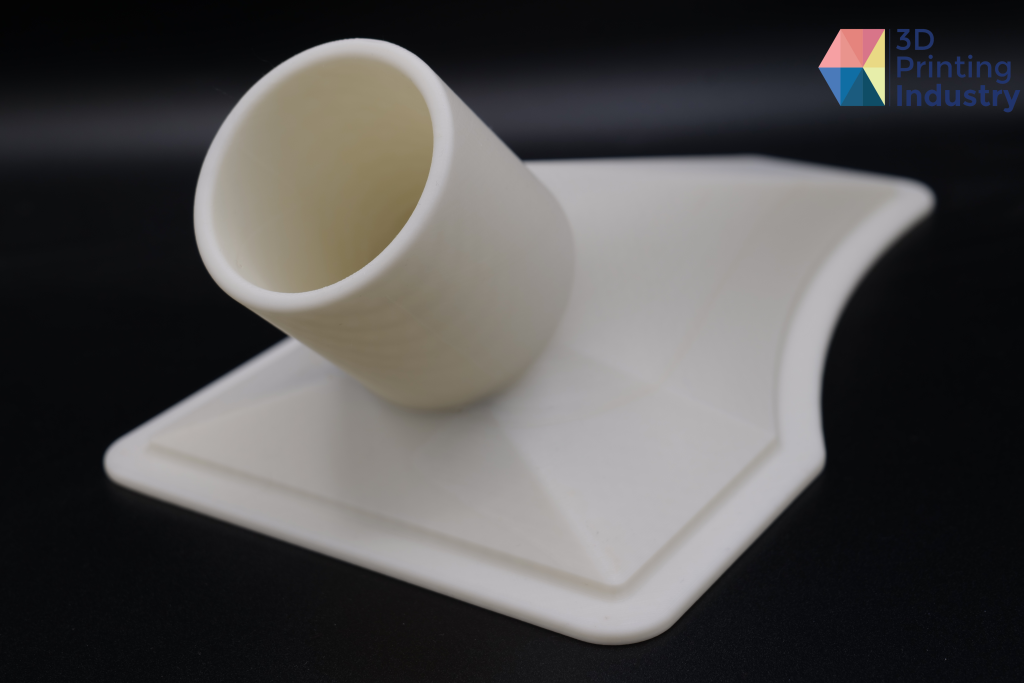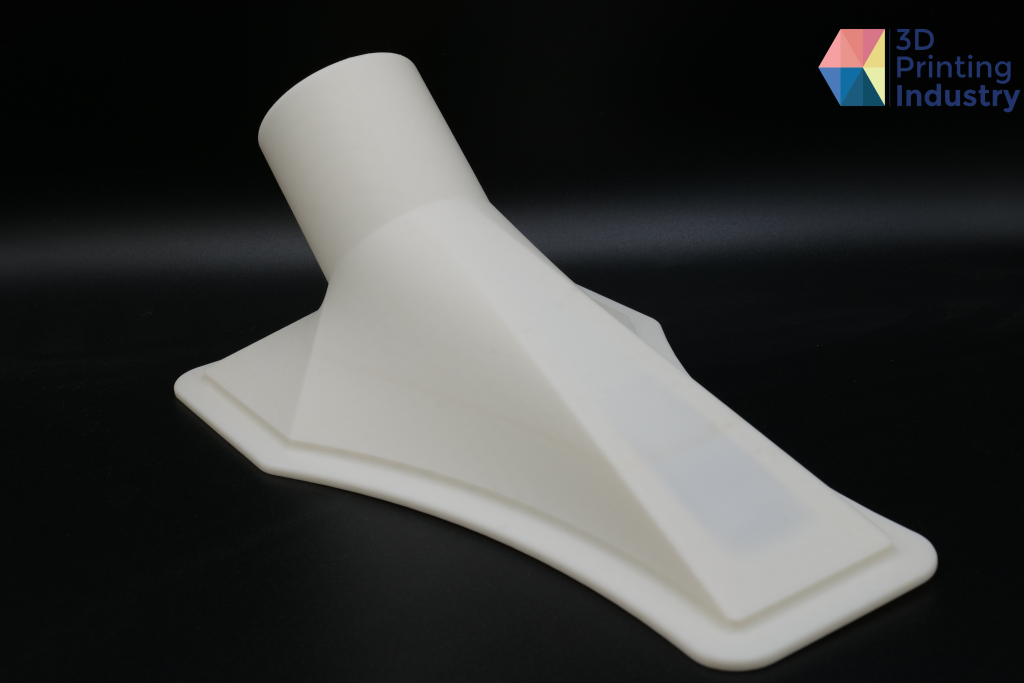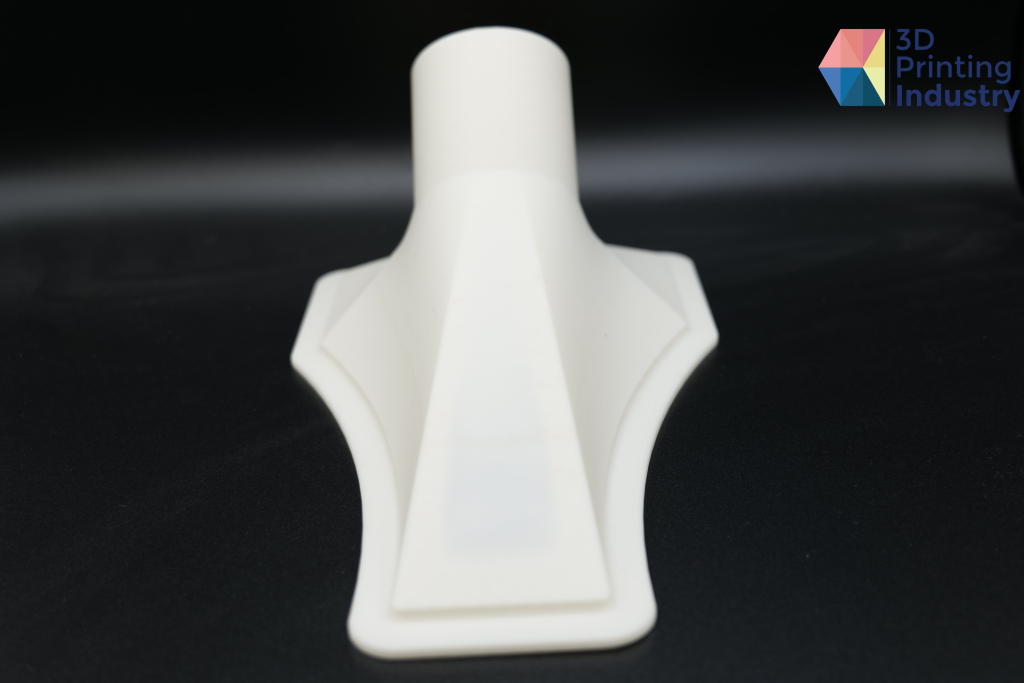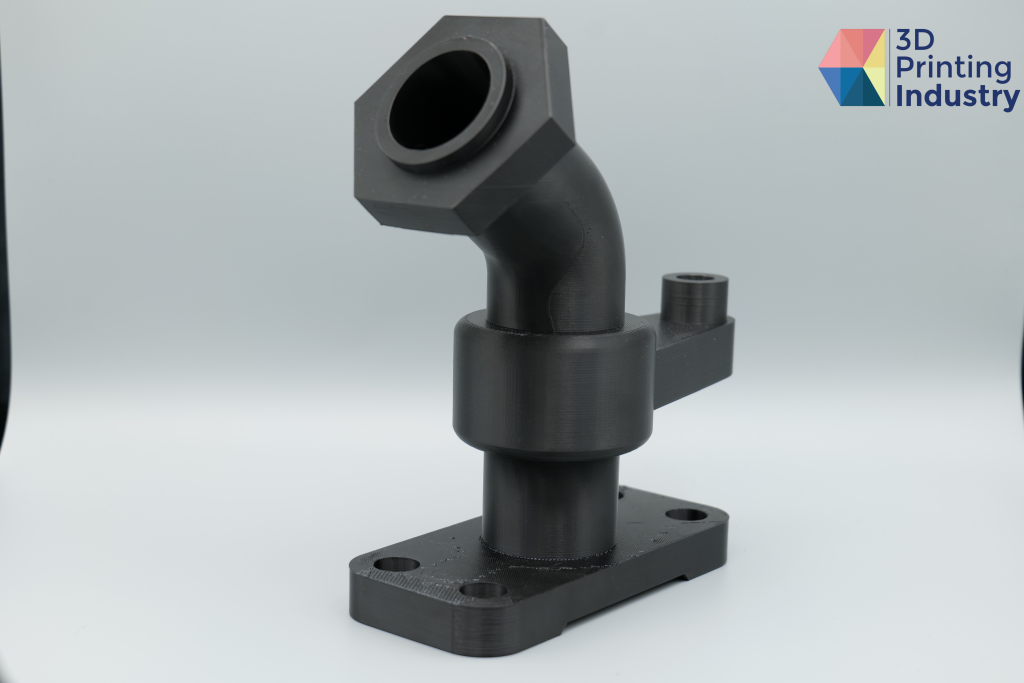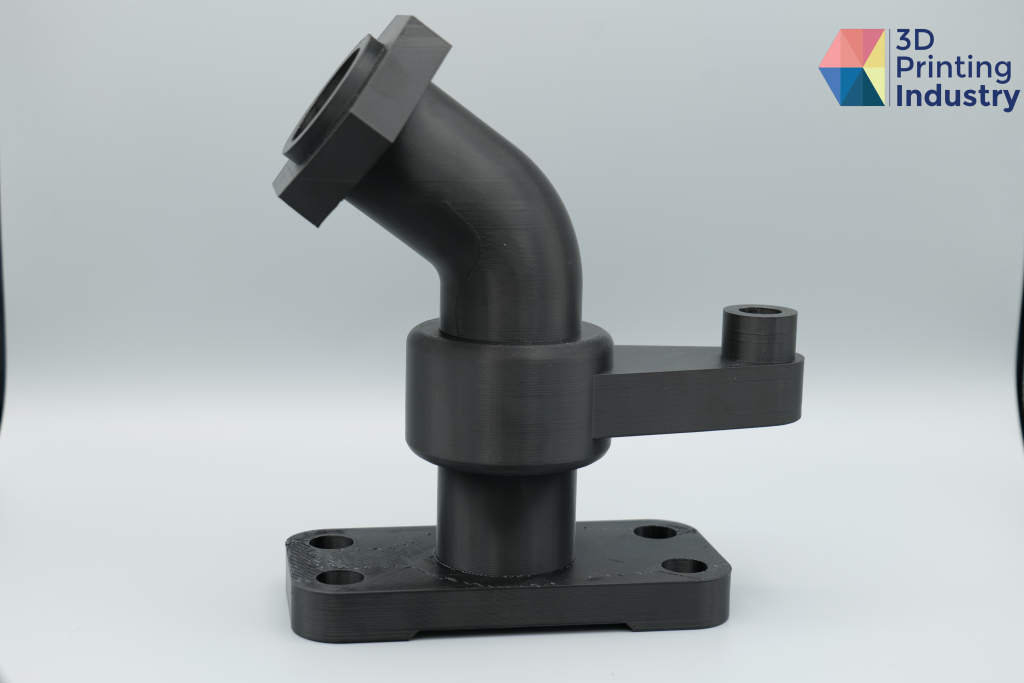Czech FDM 3D printer manufacturer TRILAB was founded back in 2016, and specializes in professional-grade industrial 3D printers.
Having merged with fellow Czech 3D printer manufacturer Prusa Research in 2021, TRILAB offers three delta 3D printers. In this article, we review the TRILAB AzteQ Industrial, which is advertised as an industrial delta FDM 3D printer with high-performance material compatibility.
Launched in 2021, the AzteQ is primarily targeted towards professional engineers, designers and manufacturers pursuing high-quality prototyping and end-use production of large parts.
Prices for the AzteQ Industrial start at around $9,700. Prospective customers can request a quote via the official TRILAB website here.
Key features of the TRILAB AzteQ Industrial
The AzteQ Industrial is advertised as offering greater spatial accuracy and material freedom than other FDM 3D printers on the market.
Central to the TRILAB AzteQ Industrial is its closed, actively heated build chamber. Capable of heating up to 80℃, this 3D printer’s insulated chamber is optimized for the production of composites from a range of high-performance, engineering grade polymers such as ABS, ASA, PA, PC, and PP. This makes the AzteQ Industrial well suited to industrial applications requiring parts that can withstand high temperatures, and that are chemically resistant.
The 3D printer’s generous 300mm (diameter) x 400 mm (height) (28.27 liter) cylindrical build volume is substantially larger than most FDM 3D printers which typically have a build volume of between 10 and 20 liters. This build area is well optimized to the AzteQ Indutrial’s compact footprint (59 x 52 x 105 cm). This allows the 3D printer to fit well into most manufacturing workspaces.
The TRILAB AzteQ also includes swappable printhead capabilities. This allows users to create printhead assemblies with dedicated configurations for various nozzle sizes, materials, and 3D printing speeds. Users can easily attach their selected printhead to the 3D printer, with the AzteQ automatically performing full 3D print calibrations.
Thanks to its size and material compatibility, the AzteQ Industrial is capable of fabricating a wide range of functional and prototype parts. These range from jigs and fixtures for automotive applications, to chemical-contacting pharmaceutical components.
The AzteQ industrial also includes internal lighting, an integrated camera, a connectable external USB webcam, and remote connection capabilities. This allows users to remotely control the 3D printer, easily monitor multi-day 3D prints, and enables TRILAB technicians to quickly and safely check the 3D printer for any faults.
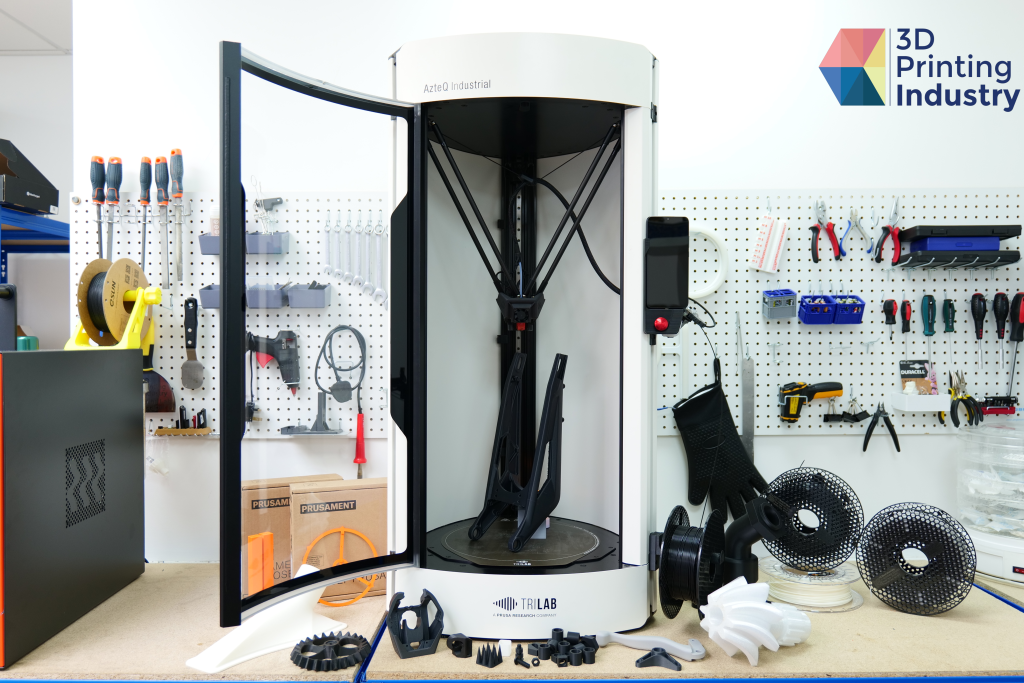
A stylish, fully enclosed, delta system
The AzteQ Industrial 3D printer sports a sleek and stylish design, with its off-white coloring complementing the black structural paint. A fully enclosed and heated system, the large transparent door allows an unrestricted view of the 3D printing process, while offering good insulation to limit heat loss.
As with all other TRILAB 3D printers, the AzteQ Industrial is an FDM 3D printer based on a delta system of axes. Delta systems feature three rod pairs arranged in a triangle above the 3D print bed, with a central effector platform holding the 3D printhead.
This architecture is well known for its faster kinematics and increased travel speeds. What’s more, delta systems offer higher spatial accuracy and superior surface 3D print quality and precision compared to traditional cartesian and CoreXY systems. Additional advantages include minimal Z-axis wobble and smooth motion for complex geometries.
The user interface (UI) for the AzteQ Industrial comes in the form of a detachable touchpad, enhancing the overall user experience with its sleek Android interface. This UI is intuitive and easy to navigate, with users able to access and operate the 3D printers features through the 6.53-inch full-color touchscreen. The 3D printer also offers broad connectivity options, with three USB ports, Ethernet connection, and WiFi/LAN.
A single extrusion 3D printer, the AzteQ industrial is compatible with three different nozzles from UK-based hotend manufacturer E3D. These include V6 and Volcano nozzles. The 3D printer employs a Titan Bowden extrusion system rather than a conventional Direct Drive configuration. This allows the 3D printhead to move faster, without creating artifacts on the surface of 3D printed parts.
The AzteQ Indutrial’s 3D print bed can heat up to 105℃. The build plate, or “PrintPad,” is removable and flexible for easy part removal. The PrintPad also includes a rough PEI surface, providing excellent adhesion, and eliminating the need for glue.
Close-up of the AzteQ Industrial’s 3D print bed, extruder, USB connectivity, and user interface screen. Photos by 3D Printing Industry.
Slicer compatibility
TRILAB does not provide its own dedicated slicer, with the AzteQ Industrial instead being compatible with third party slicers. In fact, AzteQ Industrial 3D printer profiles are available on multiple slicers, including PrusaSlicer, Slic3r, KISSlicer, Cura, and Simplify3D.
For our testing, we used the PrusaSlicer. This seemed to be the most fitting choice, given that TRILAB was acquired by Prusa Research in 2021. This slicer offers an intuitive and easy-to-use interface, offering presets for a range of commonly used materials. This software also allows support for multi-material mode, whilst offering different modes optimized for different experience levels.
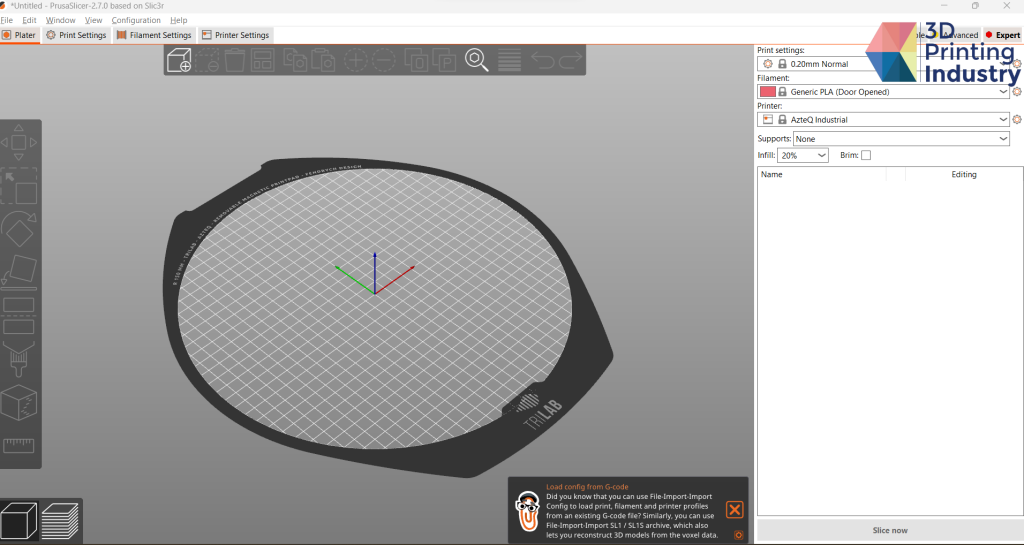
Benchmarking tests on the AzteQ Industrial
We first conducted a repeatability test. To assess repeatability, our team 3D printed three different parts (squares, hexagons, and tubes) 12 times each. These parts were then measured and compared to the original dimensions. A successful result will see these parts possess an average deviation under 0.1 mm, and a standard deviation of less than 0.05 mm.
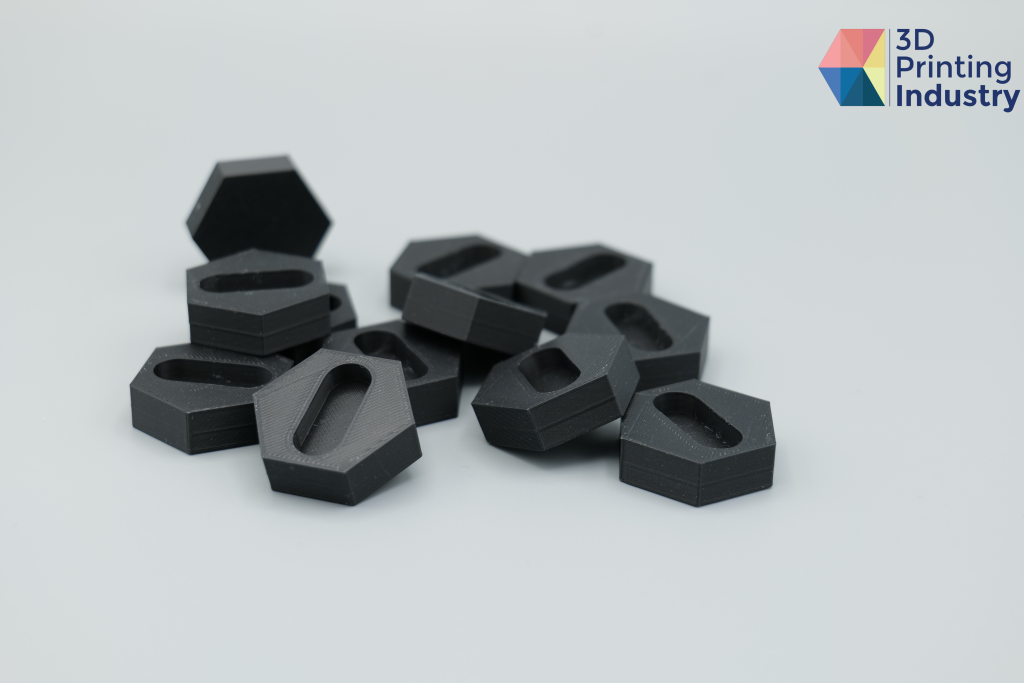
Ultimately the AzteQ Industrial performed well in this test, displaying reliable repeatability. All three parts achieved average deviation scores below 0.1 mm, and standard deviations of less than 0.05 mm.
Some minor discrepancies were found between the measured and target dimensions. For instance, the groove width and length of the hexagon parts represented the lowest average mean results, indicating poor Y-axis calibration. However, our team was able to successfully recalibrate the AzteQ Industrial thanks to the excellent technical support offered by TRILAB.
Repeatability test results. Data by 3D Printing Industry.
We next conducted a bridging test to assess the ability of the AzteQ Industrial to 3D print without supports. The small bridge lengths range from 5 mm to 25 mm with 5 mm spacings, whilst the large bridge starts at 20 mm and increases to 60 mm in increments of 10 mm.
All bridges 3D printed successfully, with quality remaining good until the 20 mm length on both X- and Y-axes. As most FDM 3D printers are limited to 15 mm, this is certainly an impressive result from the AzteQ Industrial.
The largest bridge of 60 mm also 3D printed well, with limited loose filament thread and sagging. This was a much better result than initially expected, indicating that the AzteQ Industrial’s cooling fan is sufficient for bridging with materials such as ASA and ABS. However, we were unable to 3D print the test model with a PC Blend filament, as the material could not cool down fast enough.
3D printed bridging test parts. Photos by 3D Printing Industry.
Our team also conducted tower and width tests to assess the AzteQ Industrial’s maximum 3D printing dimensions.
The tower part 3D printed very well, achieving dimensions of 19.95 x 19.98 x 399.3 mm, virtually reaching the advertised maximum build height of 400 mm. The AzteQ Industrial’s fixed 3D print bed ensured that this part achieved a clean finish, with no layer shift or uneven angles. The width test was also successful. The circular part reached the maximum boundaries of the 3D printer’s build plate, with a diameter of 299.6 mm.
An overhang test was also conducted to assess the AzteQ Industrial’s maximum 3D printable overhangs without supports. The test parts consist of 6 overhangs each, increasing by five degrees from 40° to 65°.
The AzteQ Industrial achieved excellent results for this test, perfectly 3D printing all overhangs under 65°. Some minor artifacts were found at the 65° angle, but this is to be expected. 50° is a common limit for most FDM 3D printers, elevating the TRILAB Industrial above most other FDM offerings regarding 3D printing overhangs.
AzteQ Industrial Overhang test 3D prints. Photos by 3D Printing Industry.
The retraction limits of the AzteQ Industrial were also tested. The results of this test indicate perfect retraction for this 3D printer. There was no stringing between spikes, with only a slight layer shift at the top of the part.
AzteQ Industrial 3D printed retraction test parts. Photos by 3D Printing Industry.
Our team also conducted a circular trajectory test to assess the AzteQ Industrial’s ability to 3D print parts with circular sections. 3D printing such parts can often pose problems for FDM systems, especially those with cartesian axis systems. However, this was not expected to be a problem for the AzteQ Industrial, due to its delta kinematic system.
AzteQ Industrial Circular test 3D prints. Photos by 3D Printing Industry.
The mean difference of all tests was 0.131 mm, higher than the average of 0.1 mm for most industrial 3D printers. Moreover, the 0.0846 mm standard deviation exceeded the 0.05 mm expected for most accurate 3D printers. However, the overall quality of the parts was commendable, with smooth surface finish, no stringing, and no defects.
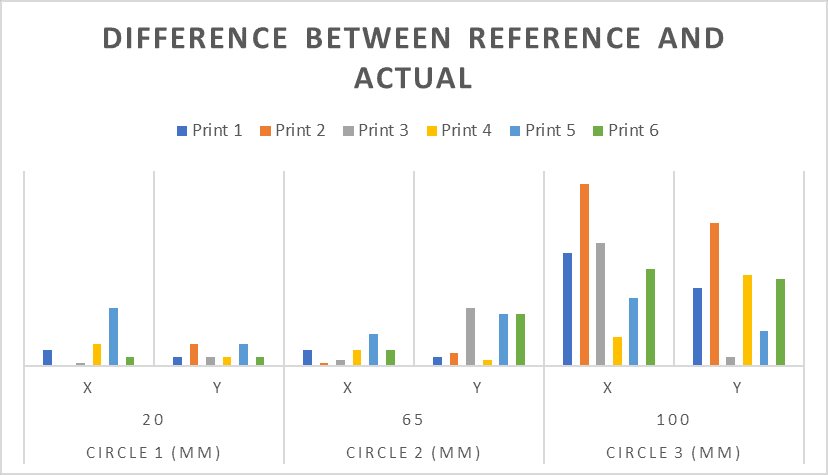
To assess the AzteQ Industrial’s ability to 3D print with higher temperature filaments, next 3D printed our in-house 3D Printing Industry (3DPI) benchmarking test in ABS. This test piece includes multiple different tests into a single part.
This test 3D printed incredibly well. The AzteQ Industrial achieved an impressive 60° overhang angle, as well as solid bridging for ABS. The negative precision test was also well handled, and the 0.4 mm thick wall was completed without fault.
3DPI test 3D print on AzteQ Industrial. Photos by 3D Printing Industry.
Ultimately, the AzteQ Industrial achieved a score of 77.78/100, a very good result. Therefore, this 3D printer certainly showcased its ability to 3D print with high-temperature materials such as ABS, that require a heated build chamber.
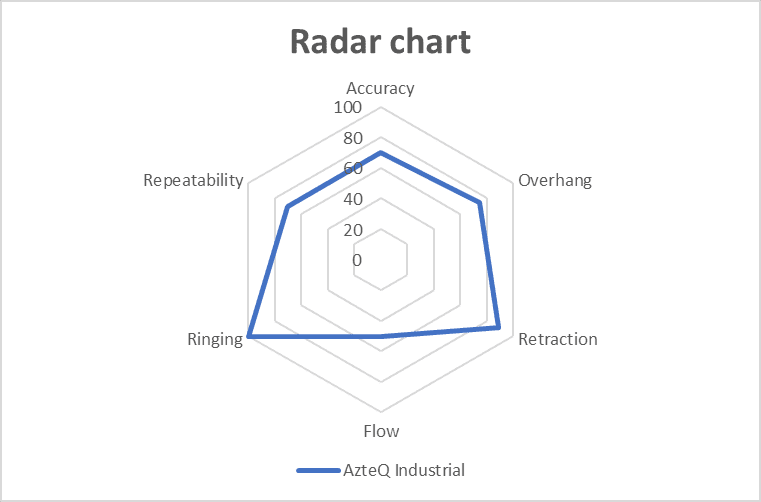
We also assessed the AzteQ Industrial’s ability to 3D print small and precise parts. Here, the test piece was a small nut and bolt with tight tolerances. The length of the screw was 28 mm. This part 3D printed successfully with a good level of detail and no defects in the thread. As such, the parts are functional, and can be easily screwed together. The TRILAB AzteQ Industrial can certainly 3D print small and precise parts.
AzteQ Industrial small and precise parts test 3D prints. Photos by 3D Printing Industry.
For our final benchmarking test, we 3D printed a planetary gear using ASA to assess the ability of the AzteQ Industrial to 3D print a mechanical part in one shot. The surface quality of this part was impressive, with no defects. Moreover, no post-processing was required and the mechanism worked very well, making it a very good mechanical 3D print.
AzteQ Industrial 3D printed planetary gear test. Photos by 3D Printing Industry.
Application tests:
Our team also conducted a range of application tests, to assess the real world capabilities of TRILAB’s 3D printer for industrial use-cases.
We first 3D printed a swing arm prototype for bicycles using the PC-CF filament. This part was based on a 3D scan of a real swing arm. The features on the scanned model were perfectly replicated on this part, with great accuracy and surface finish. The model was also strong, with no delamination along the Z-axis, showcasing good layer adhesions. As such, the 3D printer demonstrated an ability to accurately 3D print scanned models for professional prototyping or reverse engineering purposes.
AzteQ Industrial swing arm test 3D print. Photos by 3D Printing Industry.
We next 3D printed a bicycle brake lever using a PC blend material. This was a high-quality 3D print, with no defects on the part. There was also no stringing or warping, and no major impressions were made along the seam line. Moreover, the support removal process was especially easy, and ideal for a professional engineering or design environment.
AzteQ Industrial 3D printed bicycle brake test. Photos by 3D Printing Industry.
Our team also 3D printed a NACA duct component in ABS to assess the 3D printer’s heated chamber, and the 3D printers ability to work with ABS without warping. The AzteQ Industrial did not disappoint here, with the part 3D printed with no defects or warping. Therefore, we can confirm that this 3D printer can handle ABS with good control and surface finish, with no issues relating to retraction or over-oozed filament.
AzteQ Industrial NACA dust component test 3D print. Photos by 3D Printing Industry.
Finally, we 3D printed a section of piping in ASA. This test was conducted to determine the ability to handle long-term 3D prints, with this part taking 38 hours to complete. Ultimately, this part 3D printed with high accuracy and a smooth surface finish. What’s more, the overhangs were 3D printed with exceptional quality and no drooping.
We did encounter some issues with poor retraction on the skirt, which nearly slipped under the first layer of the part and had to be manually removed. To address this issue, users can adjust the retraction settings through the software. With some minor experimentation, the right balance can be found to prevent issues such as dragging, oozing, and stringing.
AzteQ Industrial 3D printed pipe test. Photos by 3D Printing Industry.
Final verdict:
Overall, the AzteQ Industrial performed well during our testing, and stands out as a professional grade FDM 3D printer capable of 3D printing high quality parts with high temperature materials such as ABS, ASA, PA, and PC .
The 3D printers heated build chamber performed well, and played a key role in achieving the high quality parts throughout our testing. As such, we can confirm that intricate designs can be 3D printed with minimal warping.
We were also pleased to find that, when ABS filament ran out overnight, we were able to load a new spool and restart the 3D printing without any problems. This was achievable as the chamber successfully maintained a heated environment.
Remote access is also a key draw of this 3D printer, with users able to upload and 3D print files remotely, even when using a different network. Live camera monitoring and build chamber lighting is also key for remote monitoring, making this 3D printer ideal for professional design, manufacturing, and engineering applications requiring overnight 3D print jobs.
In summary, AzteQ Industrial stands out in the FDM 3D printer market. The 3D printer offers wide ranging material compatibility, and an ability to fabricate high-quality complex parts for professional prototyping, design, and end-use applications. The delta kinematics certainly bolster the performance of this 3D printer, making the AzteQ Industrial an attractive option within the industrial FDM market.
Technical specifications:
| 3D Print Technology | FDM (Fused Deposition Modeling) |
| Architecture | Delta Kinematics |
| Build Volume | ∅300 x 300 x 400 mm |
| X & Y Axis Resolution | 0.25 – 1.2 mm |
| Minimum Height Layer | 0.05 mm |
| Filament Diameter | 1.75 mm |
| Maximum Nozzle Temperature | 300℃ |
| Heated Build Plate Maximum Temperature | 105℃ |
| Heated Build Chamber Maximum Temperature | 80℃ |
| Material Compatibility | ABS, ASA, PA, PC, PP, PETG, CPE, PLA, including composite and filled analogues |
| Extruder Quantity | 1 |
| 3D Printer Dimensions / weight | 59 x 52 x 105 cm / 38 kg |
| Compatible Slicer Software (gcode & STL) | PrusaSlicer, Slic3r, KISSlicer, Cura, Simplify3D |
| File Type Input | .stl, .obj, .3mf, .amf |
| Power Supply | EU 220-240V; 10A; 50-60Hz; USA and Canada 100-120VAC; 15A; 50/60Hz |
| Connectivity | USB drive, WIFI, LAN |
| Electronics | 32bit Duet and Duex primary electronics to control 3D prints |
Subscribe to the 3D Printing Industry newsletter to keep up to date with the latest 3D printing news. You can also follow us on Twitter, like our Facebook page, and subscribe to the 3D Printing Industry Youtube channel to access more exclusive content.
Are you interested in working in the additive manufacturing industry? Visit 3D Printing Jobs to view a selection of available roles and kickstart your career.
Featured image shows the TRILAB AzteQ Industrial 3D printer. Photo by 3D Printing Industry.


